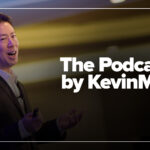“We’re six minutes in now, and she’s applied almost ten products.”
That’s how Dr. Molly Hales begins the video abstract for her recent Pediatrics study on TikTok skin care trends. The clip she’s referring to features a young girl layering product after product—acids, toners, serums—each promising glowier, cleaner, brighter skin.
This child isn’t an outlier. In a recent study analyzing 100 viral TikTok skin care videos posted by users aged 7 to 18, researchers at Northwestern Medicine found that the average routine featured six products, cost around $168, and garnered over 1.1 million views. Only one in four included sunscreens. Among the top 25 most-viewed videos, regimens contained an average of 11—and up to 21—potentially irritating active ingredients.
As an oncologist, I spend much of my time thinking about how to protect people from long-term harm. But you don’t need to work in cancer care to feel unsettled by these findings. We now have a generation of children engaging in skin care rituals driven not by dermatologic need, but by aesthetic ideals—algorithm-fed, commercialized, and largely unregulated.
Layered ingredients, layered risk
The study, published in Pediatrics, found that many regimens contained overlapping active ingredients—including alpha-hydroxy acids (AHAs) like lactic and citric acid, and beta-hydroxy acids (BHAs) such as salicylic acid. In some cases, the same ingredient appeared in up to six consecutive products. One illustrative routine included ten different products totaling $244, with repeated use of citric and lactic acids—all potentially irritating when over-applied. Sunscreen, the most basic form of protection, was absent.
In one video, the child visibly developed a red, painful rash while filming. “If anyone knows how to get it to stop burning, that would be greatly appreciated,” she said before signing off. The regimens often included ingredients that increased sun sensitivity, disrupted the skin barrier, and heightened the risk of allergic contact dermatitis.
But the dermatologic concerns are only part of the problem.
Skin care disguised as health
The authors noted that these videos often promoted perfectionism and unattainable beauty standards—framed in the language of “health.” Phrases like “porcelain,” “glass,” or “glowy” skin were common, carrying subtler implications around race and skin tone. What makes the trend especially difficult to monitor is its algorithm-driven nature.
The researchers created new TikTok accounts set to age 13—the platform’s minimum—and used the “For You” page to simulate a preteen’s viewing experience. They didn’t search for skin care content; TikTok surfaced it. That means parents, pediatricians, and teachers may have little insight into what children are watching—or how often.
While some videos showed skin care as a bonding ritual, particularly in “mommy and me” formats, the broader message was clear: more is better. And children are internalizing it.
We don’t yet know how much these routines are influencing dermatologic diagnoses or youth mental health. But the trend reflects something deeper: a growing discomfort among children with simply having normal, unfiltered skin.
A call for simplicity—and guidance
Let’s be clear: Children do not need 10-step skin care routines. Most don’t need AHAs, retinoids, or exfoliating acids at all. And families don’t need $244 regimens promising “glow”—they need honest, accessible guidance grounded in science and simplicity.
These social media–driven routines may look harmless, but their risks far outweigh any cosmetic gain. That’s the medical reality. But it’s also a cultural one. At a time when children are being sold adult routines dressed up as wellness, we should be pushing back—with evidence, clarity, and a reminder that skin care doesn’t need to sting to work.
Khushali S. Jhaveri is a hematologist-oncologist and assistant professor of medicine at the Indiana University School of Medicine, with clinical affiliation at the Indiana University Simon Comprehensive Cancer Center. She specializes in lymphoma, focusing on T-cell engaging therapies, outcomes in diffuse large B-cell lymphoma, and the impact of sarcopenia on treatment response. A former chief fellow for communication and wellness at Moffitt Cancer Center, Dr. Jhaveri also writes extensively on the intersection of medicine and society. Her work has appeared in ASH Clinical News, including the reflective piece “Redefining Home, Embracing Resilience: Life as an Immigrant in Medicine,” as well as in Medscape, where she explored evolving treatment paradigms in “Are We on the Brink of Redefining Follicular Lymphoma?” and addressed survivorship in “Cost of Survival: How Treatment Choices Shape Life After Cancer.”
You can follow her work at her website or connect via Instagram, X (Twitter), and LinkedIn.





















![How should kratom be regulated? [PODCAST]](https://kevinmd.com/wp-content/uploads/Design-2-190x100.jpg)






![How genetic testing redefines motherhood [PODCAST]](https://kevinmd.com/wp-content/uploads/Design-3-190x100.jpg)
